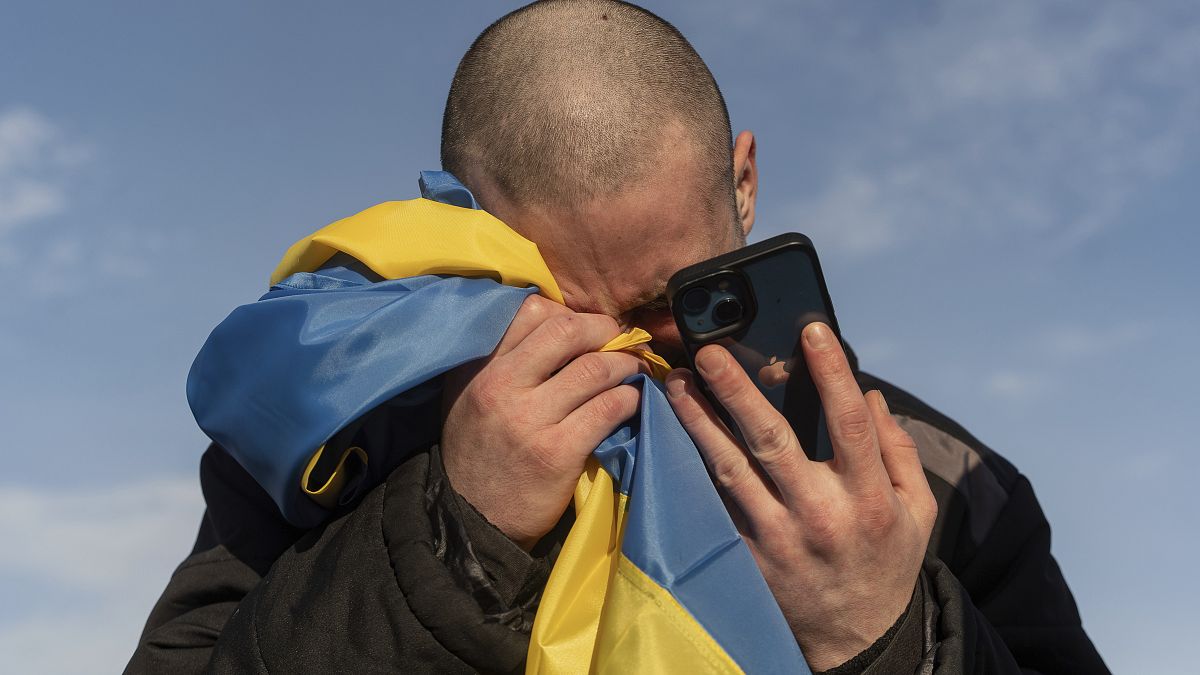Entertainment
What to know about Han Kang, winner of the 2024 Nobel Prize in literature

You’d be hard pressed to find anyone here who had anticipated that Han Kang would be awarded the 2024 Nobel Prize in literature, the world’s highest literary honor.
Although the South Korean novelist had already tallied up a number of other prestigious international accolades and is widely read here, she is 53, and the award traditionally favors writers in the twilight of their careers.
“I thought that she might win it one day, but I didn’t expect it to be so soon,” said Jeong Kwa-ri, a literary critic and former professor of Korean literature at Yonsei University, Han’s alma mater. “Most of the South Korean writers who have been seen as top contenders are in their 70s and 80s.”
Han Kang appears on TV during a news program at the Seoul Railway Station on Oct. 10.
(Ahn Young-joon / Associated Press)
Recognized last week by the Swedish Academy “for her intense poetic prose that confronts historical traumas and exposes the fragility of human life,” Han is the first Asian woman to win the literature Nobel in its 123-year-old history and the second South Korean Nobel laureate. Then-President Kim Dae-jung was awarded the Nobel Peace Prize in 2000 for his diplomacy with North Korea.
Han has kept a low profile following the win, reportedly refusing a celebration her father planned, citing the wars still raging in Gaza and Ukraine. But the rest of the country has been abuzz with “Han Kang Syndrome.”
As of Tuesday, the country’s book retailers have reported more than 800,000 sales of Han’s works and expect to hit the 1 million mark by the end of the week. Stores, dealing with long lines, are rapidly selling out, and printing presses have been working around the clock to produce more.
Han, who was born in 1970 in the city of Gwangju, comes from a literary family. Her father is Han Sung-won, a famous novelist who has cheerfully noted that his daughter’s stature has eclipsed his own.
“It used to be that Han Kang was known as Han Sung-won’s daughter, but now I’ve become Han Sung-won, the father of Han Kang,” he said in an interview in 2016.
Many of Han’s novels are intimate portraits of violence inflicted on ordinary lives, spanning both South Korea’s long history of authoritarian rule and the feminist struggles of the present.

South Korean riot police use tear gas to disperse students in Seoul in May 1993. The students had gathered to protest former Presidents Roh Tae-woo and Chun Doo-hwan’s alleged involvement in the Gwangju massacre in 1980.
(Kim Jae-Hwan / AFP/Getty Images)
Among her best-known works in South Korea is “Human Acts,” a novel about the Chun Doo-hwan military dictatorship’s massacre of civilians in 1980 following pro-democracy protests in the city of Gwangju.
Public debate about the massacre has long been an irritant for South Korean conservatives, who have at times sought to downplay the government’s role or promoted conspiracy theories that the protests were an act of North Korean subterfuge.
Under the conservative administration of former President Park Geun-hye, the daughter of another military dictator, Han was placed on a blacklist in 2014, barring her from receiving government support, along with other creatives deemed to be ideologically undesirable.
Told through multiple perspectives, “Human Acts” draws inspiration from real-life figures, including Moon Jae-hak, a high school student who was shot to death by junta forces deployed to Gwangju.
“I was so happy that I thought my heart would stop,” Kim Kil-ja, Moon’s mother, said of Han’s Nobel in an interview with local media. “Her book has managed to spread the truth about the incident to the world.”
Han’s own recommendation for those just diving into her work is “We Do Not Part,” a novel that explores a civilian massacre the South Korean government committed on the island of Jeju in 1948, a period of anti-communist paranoia. The English translation of the novel, which won France’s Prix Médicis award last year, is due in January 2025.
But the most famous — and notorious — of Han’s oeuvre is “The Vegetarian,” a darkly surreal tale about a woman who spirals into madness after vowing to give up meat. Lauded as a parable about female resistance against patriarchal South Korean society, the novel won the 2016 Man Booker International Prize, an honor shared by Han and her British translator, Deborah Smith.
But the award placed the book at the center of a fierce debate about literary translations. Critics said the award-winning English translation by Smith, who had only started learning Korean a few years earlier, not only committed basic errors — such as confusing the Korean word for “foot” with “arm” — but altered the text far beyond the acceptable parameters of translation.
“Translations of Korean literature have long suffered from many obstacles, with more ‘pure’ translations failing to find success,” Jeong, the literary critic, said.
The question has long preoccupied the country’s literary scene, which has watched South Korea’s film and television industries produce worldwide hits like “Parasite” or “Squid Game” while wondering why South Korean books have failed to capture the same level of global interest.
“As a result of that, there has been an increasing tendency in translation to overlook disfigurations of the original text in favor of conforming to foreign readers’ tastes,” Jeong said. “‘The Vegetarian’ is a prime example of that.”
Writing for The Times in 2016, Charse Yun, a Korean American literary translator, acknowledged Smith’s “exquisite” sentences but said that the translation had ”morphed into a ‘new creation.’”
“I find it hard to come up with an adequate analogy, but imagine the plain, contemporary style of Raymond Carver being garnished with the elaborate diction of Charles Dickens,” he wrote.
Defending her work in an essay for the Los Angeles Review of Books in 2018, Smith, who has translated two more of Han’s books, argued that, given the differences in any two languages, “there can be no such thing as a translation that is not ‘creative.’”
For many critics, the translation question is still an open one. But for better or worse, Han’s latest and most prestigious honor has now cemented the playbook for Korean literature’s global success.
Despite his doubts about Smith’s translation, Yun today sees plenty of reasons to be optimistic.
“The field was greatly opened and more people were able to access Korean literature,” Yun said of Han’s global rise.
“I’m just happy for my former students and other talented translators out there that now have an opportunity to bring other Korean voices to the field.”

Movie Reviews
Movie Review: A stumbling mush through memories of “Christmas Eve in Miller’s Point”

A little holiday cheer is expressed and even more is shown, or at least sampled, in “Christmas Eve in Miller’s Point.” And almost nothing is explained.
The idea behind Tyler Taormina’s (“Ham on Rye”) warm, aimless and largely laugh-free Christmas Eve wallow in nostalgia is the selectivity of memory, and perhaps how drab the “colorful” memories our director and co-writer decides to show us turn out to be.
Unexplained, disorganized and cluttered with characters we strain to identify in banal situations that go nowhere, this isn’t one that’s going to replace “It’s a Wonderful Life,” “A Christmas Story” or even “The Family Stone” or “Feast of the Seven Fishes” on anybody’s holiday movie list.
What we figure out — eventually — is that this extended family is gathering on snowy Long Island for what could be the “last Christmas” with Grandma Antonia (Mary Reistetter). Eventually, a “Carmine” is mentioned and a couple of other names that suggest this is an Italian American clan.
We see a flip phone, a ’90s Buick wagon and a ’92 Jeep Cherokee and piece together that this an “Eve” in the early 2000s.
A couple of siblings bicker with a couple others over “Sunrise Nursing Home” or “live in aid” options for their mother, over who is not doing enough to help this situation and who is.
The little kids are kind of passed-over — merely underfoot — as the adults cook, smoke cigars, kvetch and reminisce, and the teens and tweens experience traditions such as “the walk,” “the bird” (cooked) and “the parade” — decorated fire engines that pass in a blur. Some kids borrow a family Cherokee for a run out to a cemetary, a little drinking and carrying-on shared in dark close ups and hook ups.
“Car equals FREEDOM!”
We assume they’re not kissing cousins, but hey, when you don’t explain Jack, there is is some doubt.
A couple of local cops (Gregg Turkington and Michael Cera) gawk at some of this while on duty and get into one awkward conversation meant to be comical.
And the soundtrack to it all is early ’60s doo-wop and pop, perhaps for its Italian-American connotations.
I found the entire experience a dissonant disconnect as there is barely anyone to identify, much less identify with, there’s little novelty to anything presented here and nothing to root for because basically a lot of nothing or nothing much is all that happens.
Save yourself the drive. Rent “Feast of the Seven Fishes” and get a load of THOSE Italians if you want to see a memorable period piece about a memorable Christmas.
Rating: PG-13, smoking, teen drinking, sexual situations, profanity,
Cast: Elsie Fisher, Maria Dizzia, Francesca Scorsese, Ben Shenkman, Matilda Fleming, Sawyer Spielberg, Leo Chan, Gregg Turkington and Michael Cera.
Credits: Directed by Tyler Taormina, scripted by Eric Berger and Tyler Taormina. An IFC release.
Running time: 1:47
Movie Reviews
Mark Savage’s ’12 TO MIDNIGHT’ (2024) – Movie Review – PopHorror
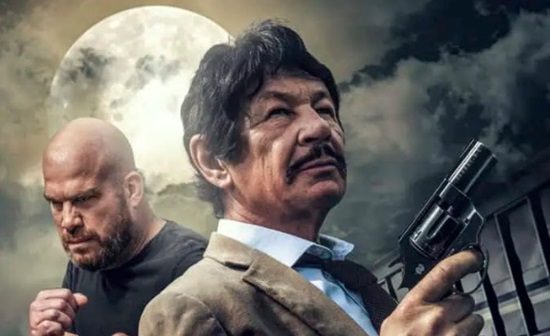
Hungarian actor Robert Bronzi has made a nice action movie career for himself based in no small part on his resemblance to the late, great Charles Bronson. Following up on his over the top, Bronson inspired gems, Death Kiss and Escape From Death Block 13, Bronzi returns in Mark Savage’s 12 To Midnight. This time it’s personal? Well, yes. But also, this time we have werewolves!
As both a Bronson fan and a werewolf afficionado, I was grinning from ear to ear when I first saw the trailer for this one. It goes without saying I was ecstatic for the opportunity screen and review this film. Did it live up to my lofty expectations?
Read on for my review!
Synopsis
A detective, despondent over the murder of his wife and forced to resign, is brought back to the force when a new serial killer begins taunting him … who turns out to be a werewolf.
Mark Savage directed the film. It stars Robert Bronzi, Tito Ortiz, Sadie Katz, and Daniel Roebuck.
Check out the trailer below!
The Setup
The first ten minutes of 12 To Midnight will have you flashing back to some great action films of yesteryear. Think Cobra or Dirty Harry or any number of classic 80’s buddy cop movies. We’re off to a good start! Bronzi is introduced as a no nonsense, tough as nails cop, who may or may not have time to bother with the rule book. Already mourning the loss of his wife – victim to brutal murder – some bloody convenience store heroics land him a fat suspension to boot.
Down and nearly out, Bronzi finds comfort in boozing and brooding. But when bodies start piling up, the police can’t afford ot keep their best detective sidelined…even if he does appear have a personal connection to the killings. Bronzi’s back on the case. Can he solve the mystery of his wife’s murder and stop the killer before he…or it…kills again?

A Fun Mashup
Let’s face it: this isn’t Ghandi or Gone With The Wind. If you’re scouting for Academy Award winners or the next indie arthouse film festival gem you’re barking up the wrong tree. However, if you love a good action yarn reminiscent of the old Cannon Films days, there’s a lot to love here. Bronzi, for his part, dopplegangers Charles Bronson nicely. Like many Bronson characters, he’s a man of action and few words, and that suits him well in 12 To Midnight. He says what needs to be said and gets some good one liners in along the way. Bronson would be proud.
Werewolf films are a dime a dozen and you can probably get fifty cop films for that same ten cents. But a hard boiled cop film that’s also about werewolves? Now we’re on to something! It’s a fun concept. There’s not much of a budget here, but they make the most of it. Bronzi is obviously front and center, but you also have some nice supporting performances from Daniel Roebuck (Stream, Rob Zombie’s The Munsters) and Sadie Katz (Wrong Turn 6). Tito Ortiz, ex MMA fighter and action film mainstay, also makes a memorable appearance.
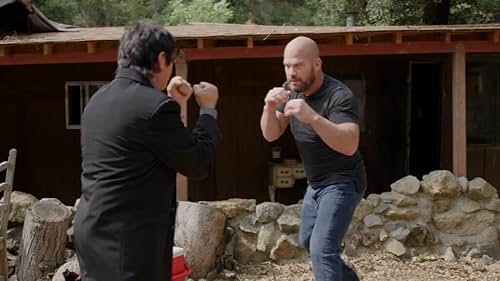
Not Quite A Classic
As fun as this movie is on the base level, it’s also somewhat frustrating because of some potentially great, missed opportunities that could have been. Revenge should be the driving force behind a film like this. Revenge for Bronzi’s wife’s murder. Thematically it doesn’t really materialize, even though it’s implied that these are serial killings. Daniel Roebuck’s character even comments that the killer wants Bronzi in play, but these connections between cop and killer are never fully made. Properly executed, this could have been epic.
Along similar lines, Bronzi plays a detective here and you see him gathering evidence in various scenes, but his character never really gets the chance to put it all together in a satisfying reveal for the audience. It’s a shame, too, because the mystery of who the werewolf is hangs out there like an itch just waiting to be scratched. Unfortunately, that reveal also falls flat.
The creature design is somewhat disappointing. The initial transformation you see is pretty cool, but overall the makeup and costume would have been much better kept in shadow and left to the viewer’s imagination. The creature’s not quite cool enough to be front and center, so you wind up seeing much more than you want or need to here, unfortunately.
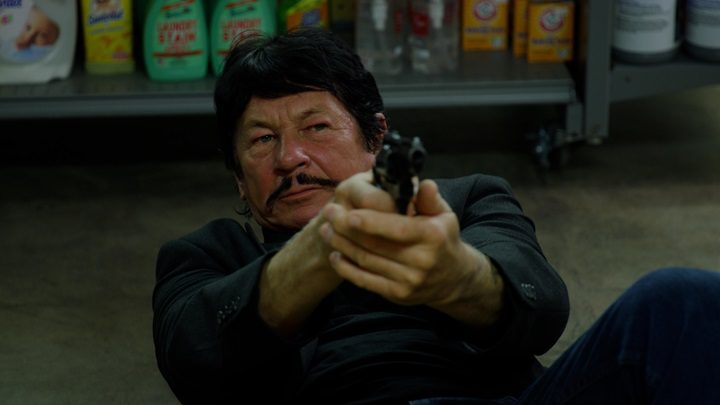
Final Thoughts
12 To Midnight is an enjoyable, mockbuster action romp, that harkens back to the glory days of video stores past. If you ever kicked back and enjoyed the latest Seagal, Van Damme, Chuck Norris, or Charles Bronson offering on a Friday night, you’re going to dig this. It isn’t perfect, but it’s a heck of a lot of fun.
Charles Bronson may be gone, but his spirit lives on in the form of Robert Bronzi. Pass the popcorn!
Entertainment
What to know about 'Agatha All Along's' Billy Maximoff: Here's his backstory
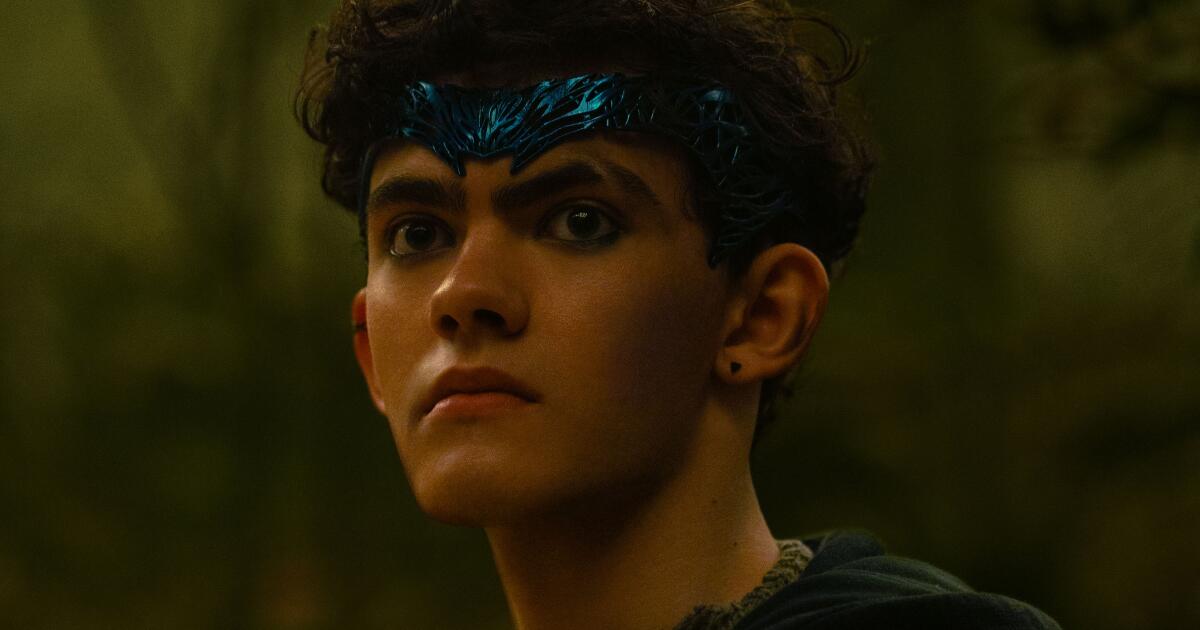
This story contains spoilers for the first five episodes of “Agatha All Along.”
The identity of Joe Locke’s mysterious Teen has finally been revealed: He’s been Billy Maximoff all along.
The fifth episode of “Agatha All Along” sees the boy who could not be named confront Agatha (Kathryn Hahn) for killing Alice (Ali Ahn), the protection witch who was trying to save her, during their just completed trial. He is disillusioned that all of the witches in their ragtag coven are operating just for their own agendas.
“You’re so much like your mother,” Agatha says to the distraught boy. As he unleashes his blue-colored magic, it’s clear she is referring to Wanda Maximoff, the Scarlet Witch.
Episode 5 ends without mentioning the teenager’s name. But Marvel Studios’ recent promotional materials have not shied away from confirming that, as long speculated, Locke’s Teen is indeed Billy.
Here’s everything you need to know about Billy and his backstory.
Who is Billy Maximoff?
Billy Maximoff (Julian Hilliard) first appeared in “WandaVision.”
(Marvel Studios)
Young Billy Maximoff was introduced in “WandaVision” Episode 3. After becoming mysteriously pregnant, Wanda gives birth to twins Tommy and Billy less than 24 hours later.
The magically created siblings have an equally accelerated childhood. The infants turn into 5-year-olds in less time than it takes to put a baby down for a nap. The kids later age themselves into 10-year-olds instantly — so they can have a puppy.
Tommy and Billy eventually show that they’ve inherited specific Maximoff traits. Tommy, taking after his uncle Pietro, can move at superhuman speed, while Billy shares Wanda’s magical abilities.
But the twins, like the version of their father Vision that lives with them in Westview, were created by Wanda’s reality-altering chaos magic. During her showdown with Agatha, Wanda realizes she can’t keep forcing an entire New Jersey suburb to live out her fantasy. After putting Tommy and Billy to bed one last time, Wanda undoes the magical hex controlling the town and the twins dissolve along with their dad because they can’t exist without it.
A grief-stricken Wanda meets a Billy and Tommy from an alternate dimension in “Doctor Strange in the Multiverse of Madness” (2022).
What were the clues that Teen was Billy all along?

Agatha (Kathryn Hahn) referred to him as Teen (Joe Locke) because a magic sigil kept his identity a secret.
(Chuck Zlotnick / Marvel)
While Teen’s identity was a magical secret during the first episodes of “Agatha All Along,” there were plenty of hints (and red herrings) leading up to the big reveal.
Teen looking for Agatha and helping break her out of Wanda’s spell gone wild in Episode 1 was the earliest indicator that he already possessed some magical skills. Even Agatha teases he must already be plenty powerful to break a spell cast by the Scarlet Witch.
It became even clearer that there was more to Teen than meets the eye when a magical sigil prevented Agatha (and the audience) from hearing his name in Episode 2. The symbol that appeared over Teen’s mouth resembled an M, so one theory held that it stood for Maximoff. (Another suggested that the M is for Mephisto, who gets a mention in Episode 3, but more on that later.)
In Episode 3, Teen, who is 16, shares with Alice that a lot happened to him when he was 13. “Agatha All Along” is set three years after the events of “WandaVision,” which means Teen would have been 13 when Wanda’s hex was active.
The number of teenage boys with an affinity for magic, a possible affiliation with the Maximoffs (or Mephisto), a boyfriend and a connection to Agatha Harkness is pretty limited in existing Marvel lore. It was long speculated that Locke had been cast to play Billy.
The series had also teased the possibility that Teen could be Agatha’s son Nicholas Scratch. But Rio tells Agatha in Episode 4 that Teen isn’t her son, and in Episode 5, Teen says “Nicholas Scratch” for all to hear. By the time the Teen wields his magic, all signs point to him being Billy.
So who is Wiccan?

There’s more to Joe Locke’s teenage wannabe witch than meets the eye in “Agatha All Along.”
(Chuck Zlotnick / Marvel)
In the comics, Wiccan is the superhero alias used by Billy Kaplan. Initially going by the code name Asgardian, Kaplan was introduced as a member of the Young Avengers whose magical powers include blasting energy and manipulating reality.
Kaplan and his Young Avengers teammate Tommy Shepherd, a.k.a. Speed, eventually learn they are the reincarnations of Wanda and Vision’s twins, Billy and Tommy Maximoff.
Comic book Wanda becomes pregnant after she and Vision have a run-in with a group of witches — who happen to be the grandchildren of her mentor, Agatha Harkness — that involves her having to channel a giant amount of magical energy. Doctor Strange later helps deliver Wanda’s babies.
Eventually a villain named Master Pandemonium, an agent of the demon lord Mephisto, comes after the infant twins. Long story short, the twins are revealed to have been (at least partially) created from lost fragments of Mephisto’s essence and he reabsorbs them.
But it turns out Wanda’s magic affected the fragments enough that they break free from Mephisto and their souls are reincarnated into separate families.
Comic book Billy Kaplan is Jewish and is in a romantic relationship with Teddy Altman, a.k.a. Hulkling.
The Marvel Cinematic Universe has already introduced a number of Billy’s Young Avengers teammates, including Kate Bishop (“Hawkeye”), Cassie Lang (the “Ant-Man” films) and America Chavez (“Doctor Strange in the Multiverse of Madness”). Plus, Kamala Khan is seen recruiting for a new superhero team at the end of “The Marvels.”
But what about Tommy Maximoff?

Twins Tommy (Jett Klyne), left, and Billy (Julian Hilliard) with their mother Wanda Maximoff (Elizabeth Olsen) in an episode of “WandaVision.”
(Suzanne Tenner / Marvel Studios)
If Billy survived the events of “WandaVision,” there is a good chance Tommy did as well. Could Billy be trying to find him?
In Episode 2, when Billy tells Agatha that he wants her to take him on the Witches’ Road, he mentions that “the Road promises that what’s missing awaits you at its end.” At the time, it was implied he wanted more power, but considering the amount of power he has been shown to possess since, perhaps what he is looking for is his missing family. Viewers will have to wait and see if a reunion with Tommy and/or Wanda is awaiting Billy at the end of “Agatha All Along.”
-

 Entertainment6 days ago
Entertainment6 days agoHold my beer can: Museum says a worker thought unique art installation was trash
-

 Entertainment1 week ago
Entertainment1 week ago'The Office' star Jenna Fischer reveals private breast cancer battle: 'I am cancer free'
-
/cdn.vox-cdn.com/uploads/chorus_asset/file/25673932/462754179_560996103109958_6880455562272353471_n.jpg)
/cdn.vox-cdn.com/uploads/chorus_asset/file/25673932/462754179_560996103109958_6880455562272353471_n.jpg) Technology4 days ago
Technology4 days agoMeta suggests AI Northern Lights pics are as good as the real thing
-

 Technology6 days ago
Technology6 days agoScammers exploit grief with fake funeral streaming on Facebook
-

 Lifestyle3 days ago
Lifestyle3 days agoIs the free speech debate dead? Plus, the devil! : It's Been a Minute
-

 Technology3 days ago
Technology3 days agoThis 3D-printed Texas hotel is shaking up the construction industry
-

 Lifestyle3 days ago
Lifestyle3 days agoHow one Afro-Colombian community honors their ancestry
-
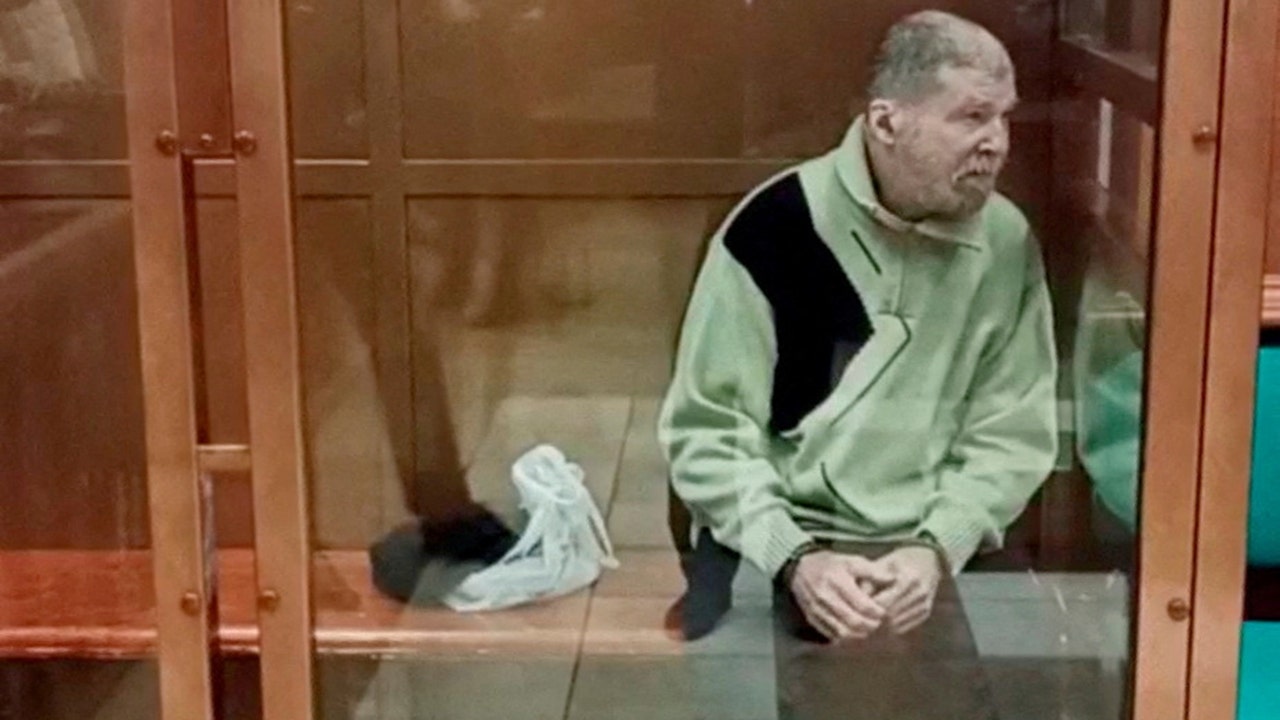
 World1 week ago
World1 week agoRussia jails American Stephen Hubbard over fighting as a mercenary in Ukraine













